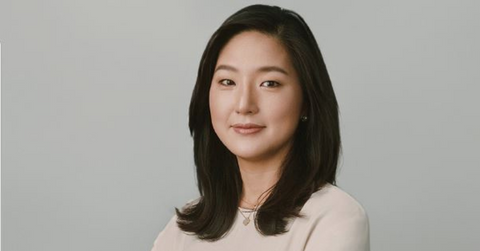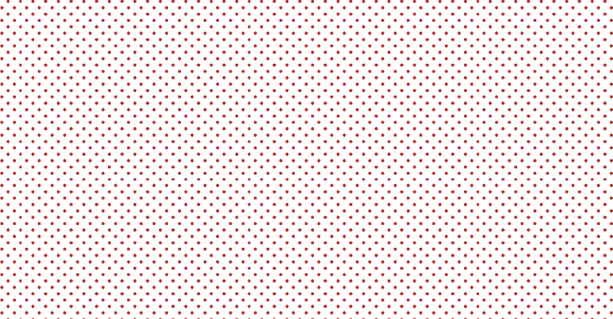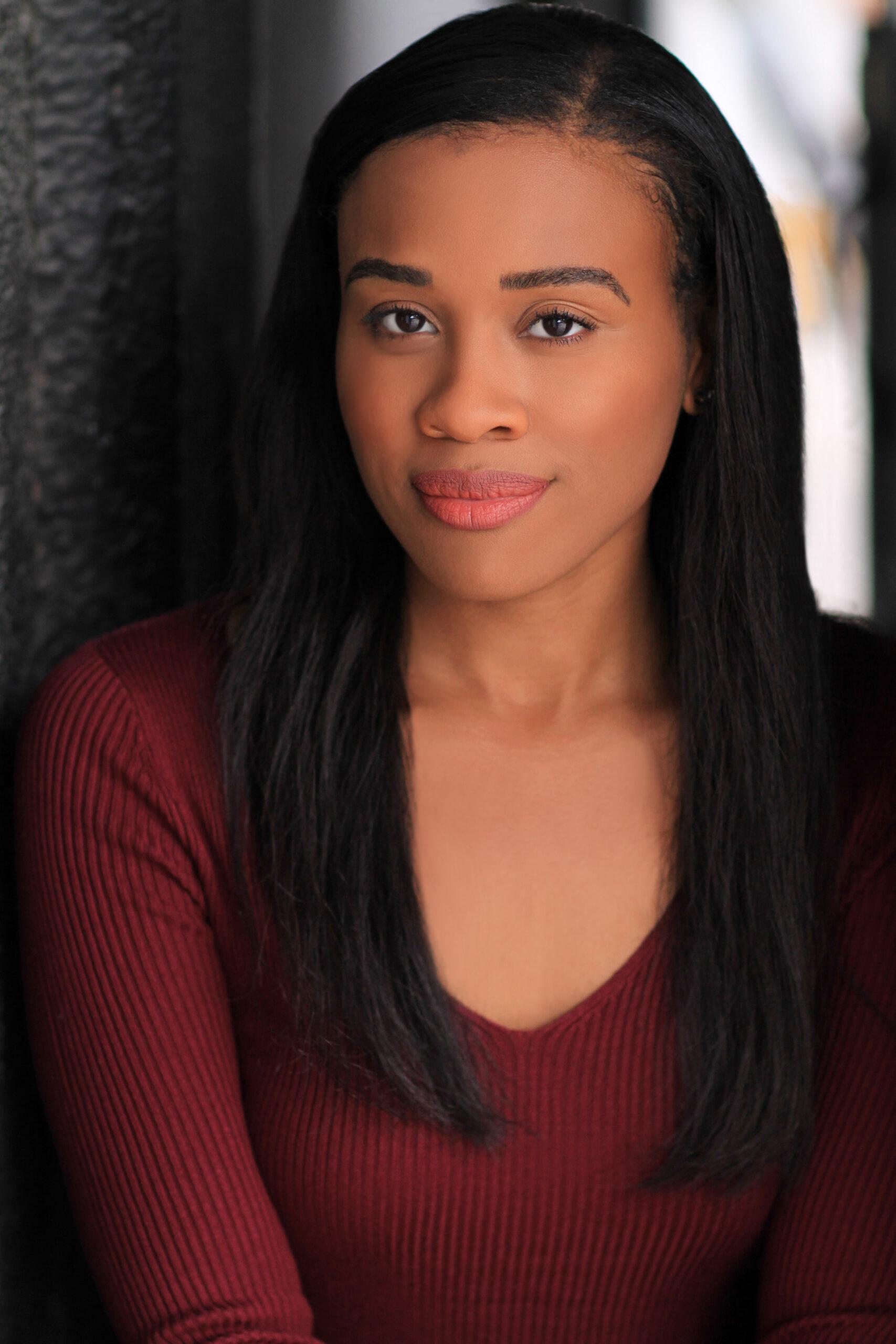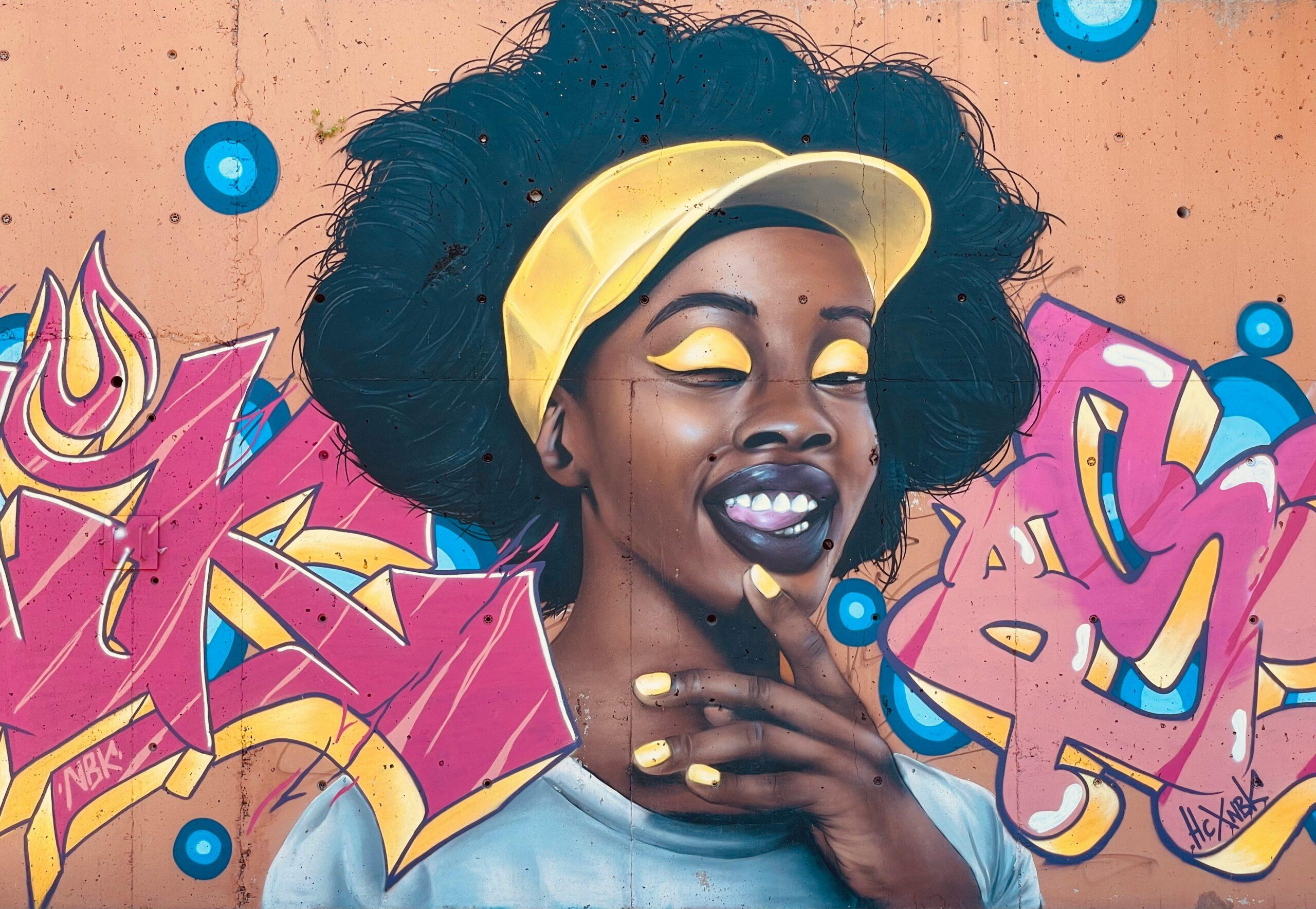Irene Kim is a force in the art world. She has one of the most important jobs within one of the biggest and best-known global art fair organizations — Global Head of VIP Relations at Art Basel.
For the last 8 years, Irene has directed the positioning and execution of VIP relations for the international art show Art Basel, which has editions in Basel, Miami Beach, Paris, and Hong Kong. She works with a global team of 40+ on four continents, engaging with an elite group of international art patrons and cultural institutions year-round. With her tactical leadership at the helm, she hopes to advance the international art community, define new relationships between collectors and galleries, and provide VIPs with unforgettable experiences.
Her work involves a delicate balance – a dance of strategic thinking, leadership, and a deep understanding of the complex art world she navigates. Irene’s diverse background has given her the tools to maintain a unique perspective on the intersections of art, culture, and business, enabling her to excel in her role with finesse.
Her previous work experience at The Armory Show, Sotheby’s, and the Guggenheim Museum has made her uniquely knowledgeable about various dimensions of the art world. Her journey is a story of bouncing back, having big goals, and having artistic integrity.
Her Agenda: Irene, thank you so much for joining us today. I first wanted to start off talking about your current role, the head of VIP Global Relations at Art Basel. What exactly does your job entail?
Irene Kim: So we have four art fairs around the world. March is Hong Kong. June is Switzerland Basel which is our mothership- the original Art Basel show that further stems upon the world. October, it’s Paris. December is Miami Beach which most Americans are very familiar with.
[We have] a very big team. We have across the globe about 40 people in my division, and we are connectors of each region to make sure that important people from all across the globe come to Art Basel. It’s really about making that connection as a bridge and almost like a communicator and window by bridging your local art community with the international world.
This is not just about the art collector, art collectors [are] included, of course, but what a VIP guest means at an art fair is very unique and different from other organizations. It’s not just about an art collector or a buyer. It’s really a curator, a journalist, a museum professional.
It really encompasses everybody who plays an important role in completing and enhancing the art ecosystem. So my team and my role is really about globally connecting the dots on making the audiences there for the global art ecosystem through this platform, Art Basel.
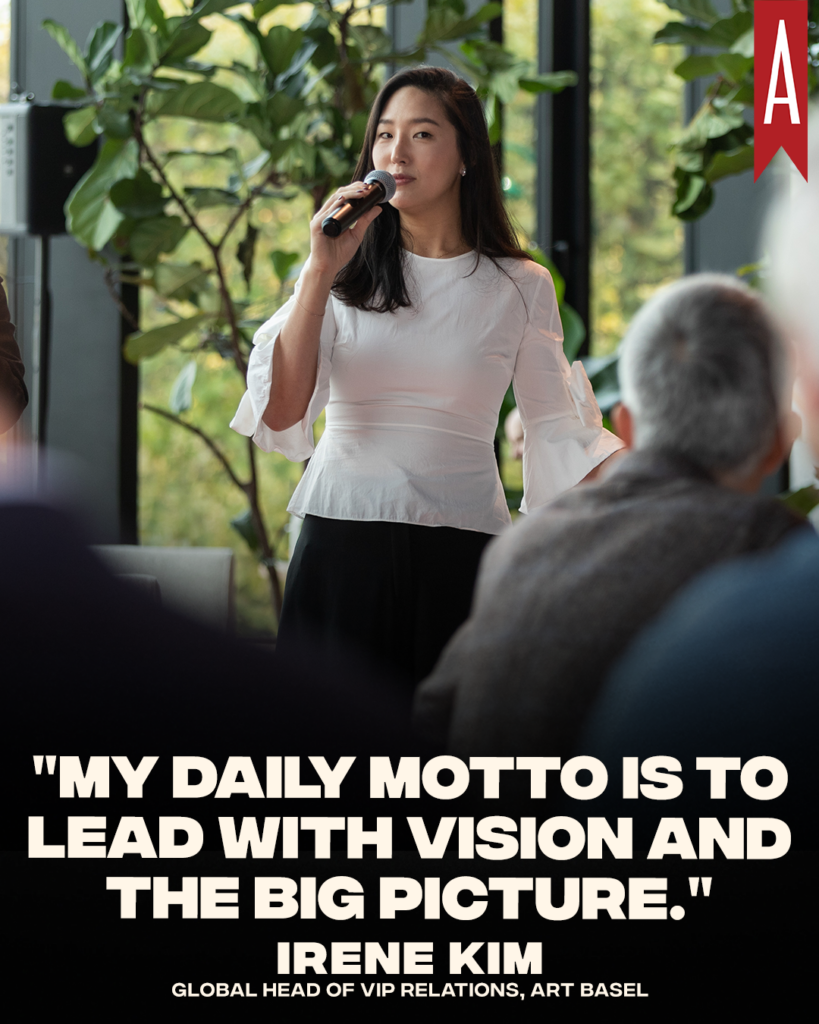
Her Agenda: What strategies do you all employ to engage but also maintain those relationships with your VIP high-profile clients?
Irene Kim: When you say VIP, it just feels like it’s only talking about a very affluent collector, but in reality, museum directors, curators, and journalists, everybody is very important to make it all work. Everybody, I cannot emphasize the importance of every key influencer all coming together to make it work.
Art Basel is kind of like a think tank in a way. Yes, primarily it’s an art market where galleries bring artworks and there’s collectors and whoever comes to buy, that’s the original concept. But it has really grown beyond that.
We look at it globally and locally, and it’s really about how, in terms of how we fit in if we have to really factor in, how does Art Basel support the cultural landscape where we are? It’s really about not just setting up a fair and then saying goodbye but creating a very long-standing, long-term relationship with where we stand.
That local connection is very important. And then, in terms of the people, it’s really about catering to everybody’s different needs and interests. So you can come to the fair for many different purposes. It could be just to buy art. It could be to look at art. You could be a first-timer where you have an interest in art, but you have no idea where to start.
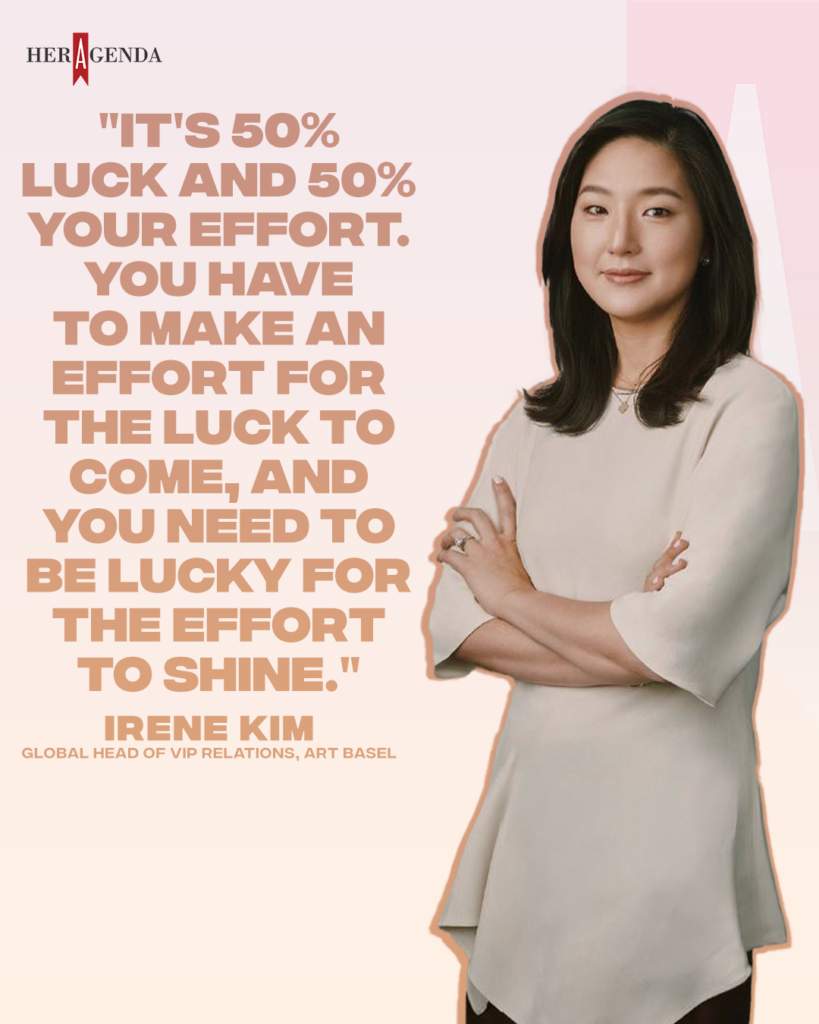
Her Agenda: There are so many different things that are being woven into Art Basel. How would you say that you all are continuing, continuing to weave in diversity and inclusion? So people, no matter where they come from, no matter what walk of life, if you’re interested in art, you can come, and you can enjoy Art Basel.
Irene Kim: This is something that we take very seriously. When we create the fair, we make a conscious effort to showcase a range of artworks, artistic presentations from across the world. It cannot be skewed to be just about white artists, nor Black artists, nor Asian artists.
It cannot be about just galleries from a certain region. So for our show in Hong Kong for example, it’s mandatory that 40% of the galleries have to come from Asia, then the rest of the galleries can be filled from elsewhere. This way we ensure that we keep a nice balance of inclusion supporting the anchoring region, yet keep a diverse profile.
That is why each Art Basel is very different from each other and keeps its unique character. I believe that’s how we ensure we have diversity and inclusion all in mind.
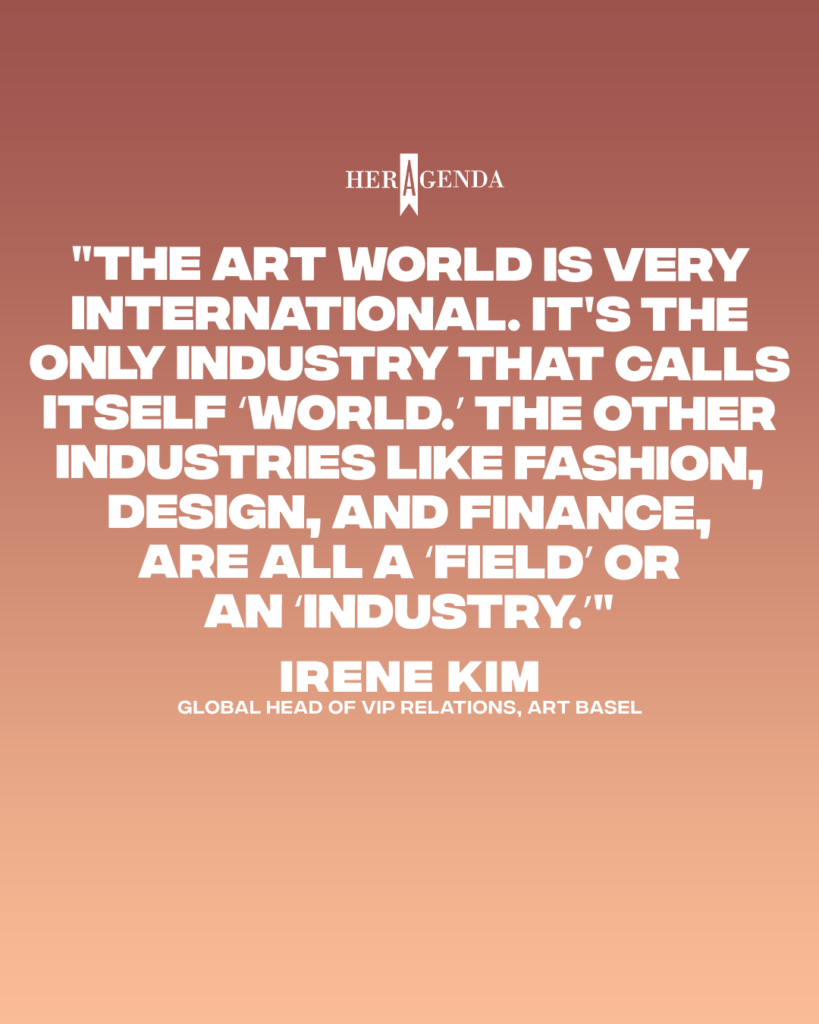
Her Agenda: Before Art Basel, I know you were at Guggenheim and Sotheby’s. Were you always interested in art?
Irene Kim: I wanted to be an artist originally. I was quite good at technical drawing and painting. My mother’s a textile artist, I got my art genes from my mother’s family, and my cousins are photographers, videographers, and advertisers. They’re definitely on the artistic side. I grew up going to a lot of museums since I was a little girl because of my parents’ influence. I originally wanted to be an artist, but then when I was at a crossroads to choose to go to art school or not, I didn’t think that I had the overflowing creativity in me, to be very honest.
So I chose English literature as my undergraduate major, which is still artistic, and I loved it. Not to sound cliche, but you know, we did a family trip to the Louvre when I was 18, and it was a lightning-striking moment for me where I [decided I needed] to be part of this. I had to figure out okay, I’m not an artist, I’m not going to be an artist, but I need to support this to make this cultural landscape happen. That was my mission to develop my career.
That’s how I started originally, from a museum. I didn’t know that I would work at an art fair for such a long time, but one thing led to another. One common thread that I have always worked very closely on is museum relationships. I started the Guggenheim, I went to Sotheby’s, and I managed all of their cultural relationships with museums across North America.
Her Agenda:I feel like a lot of people would have been sad or they would have felt discouraged if they had this dream for so long and it didn’t work out. I love the fact that you were just kind of like, well, there’s still a passion for art. I just need to pivot, I need to figure it out. What advice would you have to creatives or people who may be like, ‘Oh, I don’t know if this is the direction for me anymore, but I’m still passionate about this world or this landscape?’
Irene Kim: That’s a good question. I have two little children, and that’s something that I ask myself. What do I tell them? Honestly, a lot of times, people don’t really know what their true passion is, or when they have the passion in front of them, they doubt it. Everybody does that.
In my honest opinion, I think it’s a passion when you feel like it gives you the butterflies in your stomach and you feel like if there’s nothing else to do, let’s say over the weekend, what do you want to do [with your time]? I always loved going to museums.
I love seeing art exhibitions. It gives the butterflies in my stomach. I feel like it’s never a waste of time.
In my case, I wanted to be part of it. I did not give up, and I kept on making a way. At first, I was like, okay, maybe I’ll be an interior designer. Maybe I’ll just be a museum professor, an art historian, or a teacher. There were many different ways. I think as you develop yourself along the way, doors open. And I always say it’s 50% luck and 50% your effort. You have to make an effort for the luck to come, and you need to be lucky for the effort to shine. It also comes with the people that you meet in life, too [especially since] I’m in the relationship-driven business.
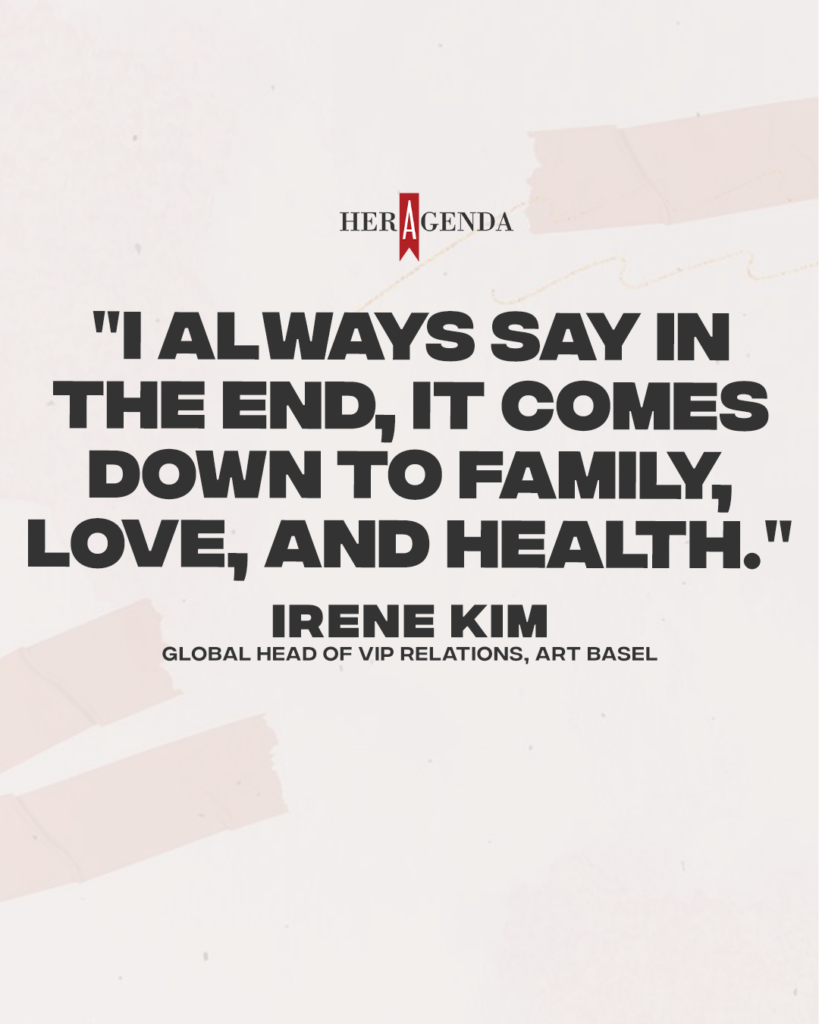
Her Agenda: I was going to ask you about that too. You’re probably really good at networking and connecting with people. I feel like people, just to be frank, I feel like people hate doing that now. Do you have any tips and tricks for talking to people and networking?
Irene Kim: I’m very curious. I even enjoy reading books. I like biographies.
In the end, I think everybody is very similar. What we share as humanity, concern, happiness, joy, or challenges is very similar across the board.
I always say in the end, it comes down to family, love, and health and everything else comes with it for true happiness in life. In a way, my colleagues always say, we’re therapists in the art world because art collecting, art passion is very intimate. It’s very spiritually connected, where you do have to talk a lot about your personal self. I enjoy it because I always think that you learn from it. You learn from talking to others. You learn from meeting people from all over the world. You learn what is inspiring. You learn how to become. You learn what to do. And you also learn what not to become or what not to do. In that sense, I always find it as the most educational position that I’m in for myself by meeting with all these people.
Her Agenda: What are some things that art has taught you, whether it’s about life or about love or about family? What have you gained from your love and from your passion for art?
Irene Kim: I think number one is being open-minded. You could see [a piece of art and say] oh, that’s so ugly. I’m never going to put it in my living room. That’s fine. But wonder why it is, what is the meaning behind it? What is it trying to say? You know, why is it even so ugly? I’m always curious about the why.
The other thing is worldliness. The art world is very international. It’s the only industry that calls itself ‘world.’ The other industries, like fashion, design, and finance, are all a ‘field’ or an ‘industry,’ but the art world is the only thing that calls itself a world. [Art] speaks with its worldliness, where it connects, wherever you’re from, again, that there is a spiritual and mental aspect of art, where it connects the object or the creative work and the people despite background or the differences. In that sense, I think it helps you to be more worldly.
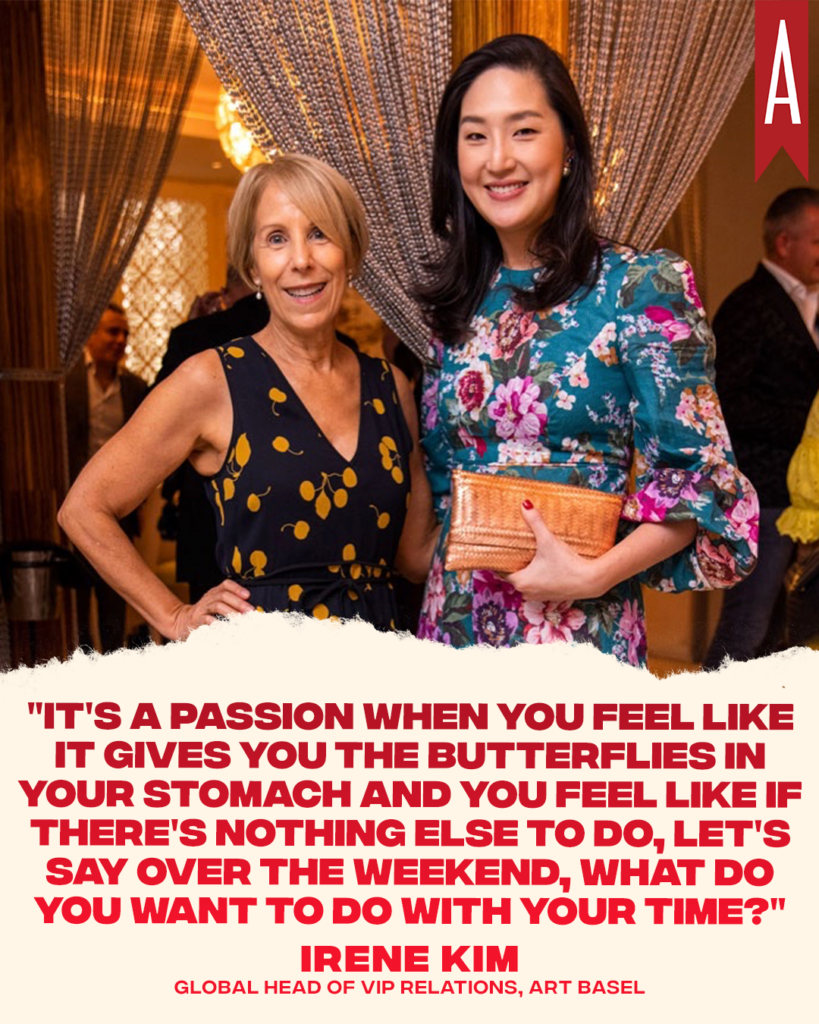
Her Agenda: I feel like this may also be a tough question to answer, but do you have a favorite art piece?
Irene Kim: Oh, my God, that’s really tough. That’s really, really tough. You know what I can say? The first exhibition that I was really wowed about I was at the Guggenheim Museum. It was my first job. I’m not from New York, so it was a New York museum job. I was beyond thrilled. I thought I was living my dream, despite the very small salary. The first show that I was involved in was Cai Guo- Qiang, a contemporary Chinese artist who did the show. You should really look it up. It was amazing. His artwork is all about ideology and also about using gunpowder. I think it may be the first retrospective large show of an Asian artist, of a contemporary Asian artist, at a New York institution. Times were different back then, [it was] almost 20 years ago. It was just very poignant of many societal issues or just the reality of how we are. I’m not saying it’s my favorite artwork or anything, but I would like to use that as an example, one of my in-person experiences of how artwork, an exhibition can be so memorable and lifetime experience worthy.
Her Agenda: For my last question, why do you think people, whether they’re into art, curious about art, not sure, or just bought the tickets and are so excited, make Art Basel so special?
Irene Kim: We’re the best. We really take it so seriously. We present together with the galleries. We take it very seriously to present the best artwork out there. Art Basel is the most cutting edge, the most relevant platform where you can read [about] the current art world that is connected to our current world because artwork is usually a reflection of the portrayal of our society. It is a very high quality presentation that we present. I had a friend who came to Basel Switzerland for the first time, and it was so eye-opening and it was so experientially different. It’s because we have very ambitious curatorial presentations that most art fairs are not able to do. At Art Basel, actually all of the shows, we have very large-scale installations that you would only see at a very large institution or never.
It allows the galleries and the artists to really push their ambition to not be confined into a wall space or a ceiling height and really present something so ambitious. And we provide a platform for that. So in that sense, I think it really sets us apart in many ways.
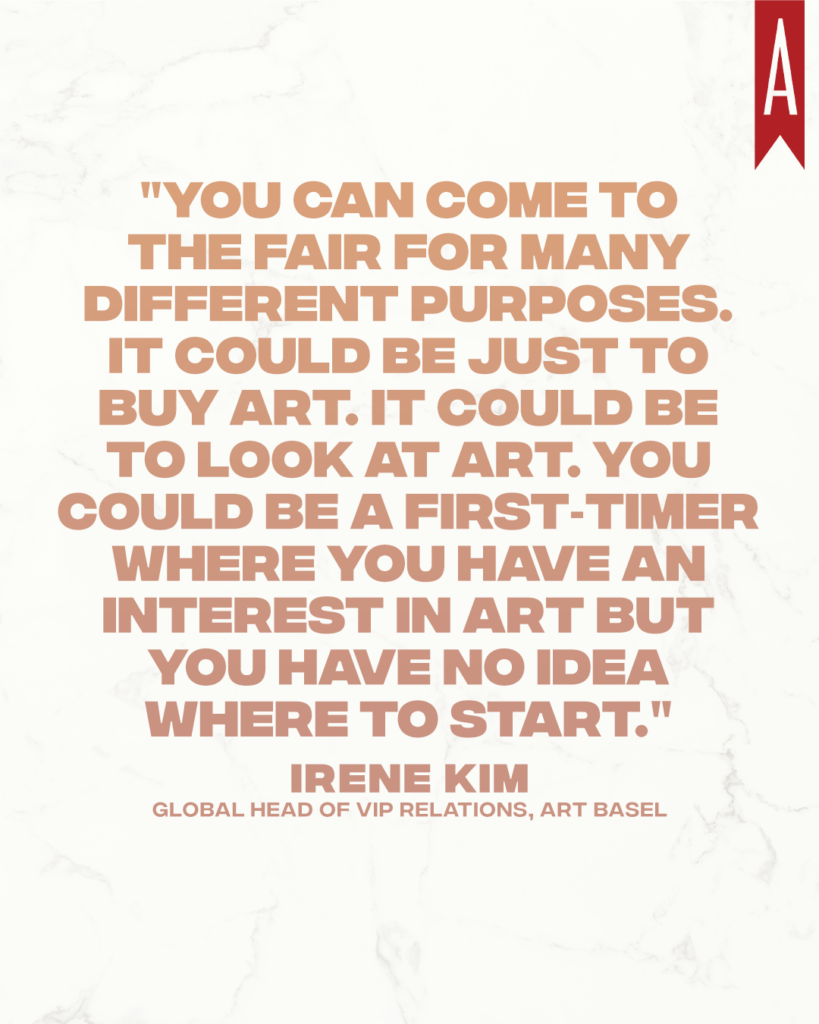
[Editor’s note: This interview has been edited for length and clarity.]

